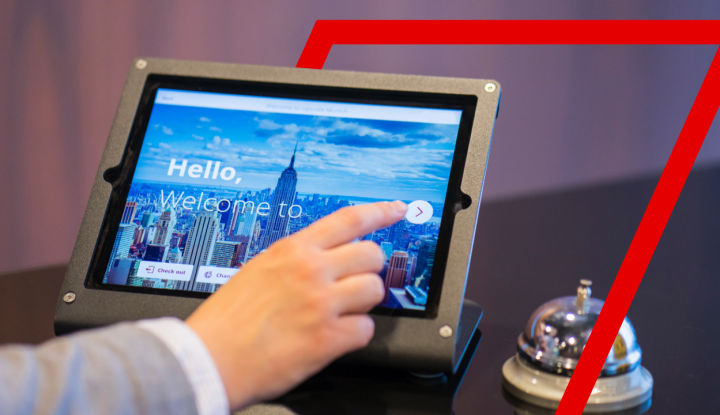Most passengers can recall the feeling of something just not tasting quite like it would on the ground — does gravy really taste that bitter? Maybe so. Science backs this up, confirming that the lack of humidity at 30,000 feet dries out food while a pressurized cabin
dulls taste buds up to 30%. So if you’re expecting any umami you’ll probably be disappointed!
Over 84 million domestic and international passengers were
served within the U.S. alone in 2014, and the number grows to a total of 6.4 billion globally. According to Sabre data, an average of 15,000 individual food and beverage components are stocked and served on an international flight – that’s 15,000 opportunities for airlines to enhance the traveler experience by sending memorable food down the aisle.
United Airlines Executive Chef Gerry McLoughlin explains in a
WaPo video that, in the not too distant past, mystery meat was slathered in sauce to maintain moistness. After 26 years in the business he realizes that the tables have turned:
“We’ve realized again that [food] is a part of the customer experience.”
Many travelers consider themselves foodies and expect a food experience that mirrors their favorite food truck park or corner bistro. After all, whether for business or leisure purposes, travelers spend a fair amount of time planning meals and gastronomical excursions and events. This is especially true for premium passengers, a key demographic for airline profitability. So starting and ending the trip with a pleasurable dining experience helps airlines become more of the travel experience, rather than simply a means to the end goal.
Local and seasonal
The local and seasonal trends are now mainstays of the food world. “Farm-to-table” has nearly become its own kind of bland cliché within the industry. Nonetheless, the focus on fresh ingredients makes sense — and makes the foodie traveler happy. After all, culinary tourism is one of the hottest trends in travel. And fewer stops through a processing plant does wonders for your heart.
Airlines are jumping on the trend with gusto. Alaska Airlines dubs its food program “
Beyond Food” and brings custom-crafted food from Seattle’s renowned chef Tom Douglas to emphasize Alaska’s roots in Seattle.
Delta has partnered with local chefs to deliver a local cuisine experience that gives passengers a “sense of place.” From its Atlanta hub, celebrity chef Linton Hopkins sources ingredients from local Southern farmers to feature in meals on flights from Atlanta to Europe. The airline rigorously promotes its revamped food program, touting “Seasonal. Regional. Delightfully Unexpected” as part of its
food services marketing.
Red or white?
Wine pairings are not overlooked, as sommeliers work with most major airlines to curate impressive wine lists that pair well with their respective food programs.
The craft brew explosion is in full swing on most airlines, who have expanded traditional beer selections to include multiple choices of more local craft beers. Delta features Blue Point Brewing Company and SweetWater Brewery, while the ever posh Virgin America has long offered passengers local alcohol selections, from Karma California Brut to 21st Amendment.
Food as marketing event
Airlines have also latched onto travelers’ growing culinary obsessions by creating one-off events and ongoing partnerships that emphasize the brand’s commitment to good food.
United, for example, has partnered with the Trotter Project, the legacy of beloved Chicago chef Charlie Trotter. The
partnership brings Trotter-affiliated chefs from a variety of backgrounds to re-imagine the in-flight food experience.
SWISS took to the sky, claiming the “first-ever”
pop-up restaurant at 30,000 feet. Tacking itself onto the pop-up trend proved quite successful for the brand, with mainstream media covering Andreas Caminada’s one-off food experience.
To round it off, Singapore Airlines perhaps wins the award for commitment to passenger experience with its food personalization program
Book the Cook. Essentially, the airline has made it so first, business and premium-economy passengers can pre-order a menu of their choosing. This deep personalization keeps passengers happy while clearly differentiating Singapore Airlines from the competition.
Whichever way you slice it, good food is here to stay. As a recent
Sabre Insights article explains, using Big Data and analytics, airlines can better understand their customer, including underlying trends that drive traveler experience and expectations. Food is a clear focus and differentiator for airlines that can inject fresh flavor into the passenger experience. Airlines must consider how food and beverage programs position their brands while working diligently to deliver on this promise with each in-flight meal.







